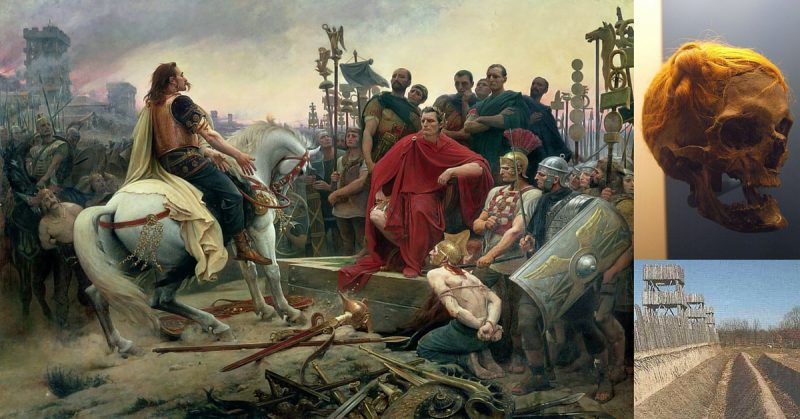By Ludwig H. Dyck
During Gaius Julius Caesar’s conquest of Gaul (58-51 BC) and during the civil war (50-45 BC) that followed, Caesar commanded over an army of Roman legions and tribal auxiliaries. Among the latter was a troop of German tribesmen, who, out of all proportion to their paltry numbers, would, time and again, lead Caesar to victory.
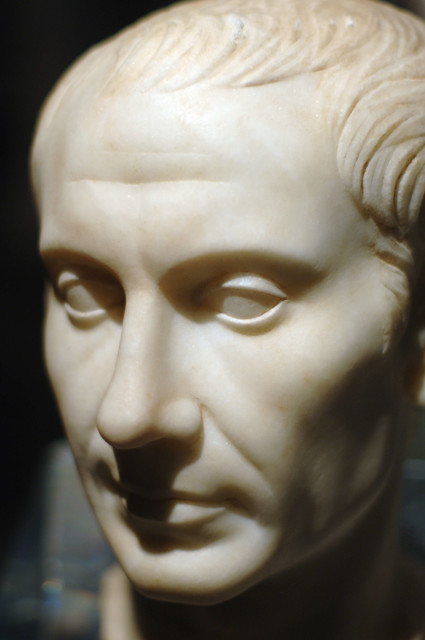
The Germanic tribesmen were tall men, with skin leathered by the elements and scarred from battle wounds. Their limbs were gnarled and muscular, their eyes wild and fierce. Men of war; they were armed with spears and swords, shields and helmets. Some wore their long blond or red hair combed sideways and done up in a knot, after the fashion of their people, the feared Suebi. Others hailed from the Usipetes and from the Tencteri, a tribe renowned for its cavalry.
The Germans first joined Caesar after he had beaten back German tribal intrusions into Gaul in 58 and 55 BC. There were four hundred of them, hostages of tribal nobles and their retainers. They were there as a show of good will and trust, and for the loot and glory in battle.
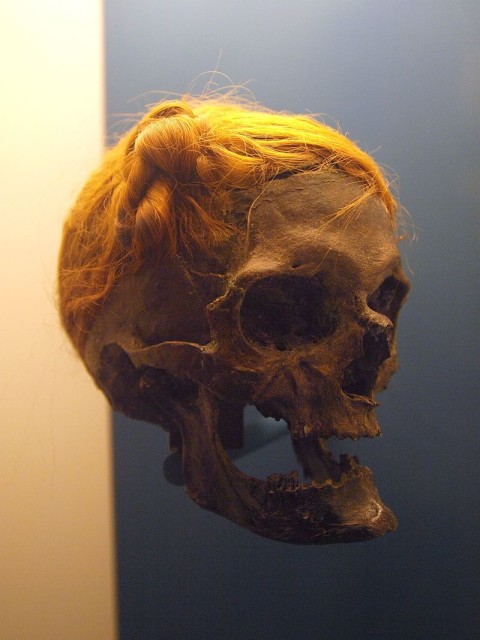
That the Germans would fight for former foes was not at all unusual. The retainers of a German chief hailed not just from his own tribe, but from tribal hostages and from warriors who wandered the land in search of battle and plunder. What did it matter to them, if they fought for a German chief or a Roman consul? Germanic warriors even served as bodyguards for Cleopatra and for Herod the Great. The Germans were not the only tribal auxiliaries in Caesar’s army. For the vast bulk of his cavalry, Caesar depended on allied Gallic tribes and there was also a small detachment of Spanish cavalry.
Caesar was impressed by the martial spirit of the Germans. He wrote that, though in the past the Gauls had been more warlike than the Germans, the Gauls had come to “not even pretend to compete with the Germans in bravery” (Caesar, The Conquest of Gaul, IV. 24). Even the “fierce glance of their eyes was more than they (the Gauls) could endure” (Caesar, I. 39).
Caesar blamed the softening of the Gauls to their trade with Roman provinces, which provided them the luxuries of civilization. In comparison, the Germans maintained their hardiness through their harsher, more primitive lifestyle. In reality, the ethnicity of tribes facing each other across the Rhine was not as clear cut as Caesar maintained although the river did serve as a rough border between Celts and Germans.
In battle, a swift German light infantry soldier ran alongside each cavalryman, clinging to the horse’s mane to keep pace. He protected the cavalryman’s flanks and stabbed at the enemy horse. Caesar valued his German warriors so highly, that he replaced their pony-like horses with the larger steeds of his bodyguard, tribunes, and knights.
It was in 52 BC, during the final and most critical year of Caesar’s Gallic war, when Caesar’s fortunes would fall to an all time low, that his German cavalry would rise to the occasion.
Caesar was accepting the surrender of the town of Noviodunum Biturigum, when the cavalry of King Vercingetorix, the charismatic Gallic resistance leader, appeared on the horizon. Caesar ordered his several-thousand-strong allied Gallic cavalry to take the field. Caesar’s Gauls had the worst of the ensuing fight, prompting Caesar to sent in his 400 Germans. With a furious charge, the Germans scattered the enemy and inflicted heavy casualties.
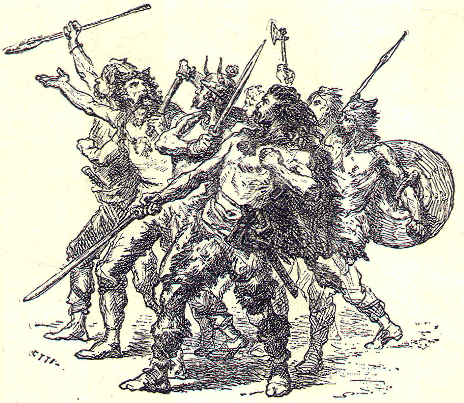
Vercingetorix, however, re-gained the initiative with a defensive victory at Gergovia. With many of this Gallic allies having switched sides, Caesar recruited another 600 German tribal cavalry and light troops from across the Rhine.
Caesar tried to retreat back to the threatened province of Gallia Narbonensis when Vercingetorix again attacked with his cavalry. Vercingetorix’ sudden appearance caught Caesar unprepared. However, the Gallic cavalry failed to close in for combat with the Romans and skirmished about instead. Caesar’s auxiliary cavalry kept the enemy at bay, allowing the legionaries to form a defensive square. Caesar’s German cavalry meanwhile gained the summit of a nearby hill. Not content with being on the defensive, the Germans routed a body of Gallic horsemen and hurled them back upon their own infantry. The rout caused the entire Gallic cavalry to take to flight.
The Gauls placed the greatest reliance on their cavalry arm and with its defeat, their spirits sank. The initiative was back in Caesar’s hands. Vercingetorix retreated to the stronghold town of Alesia. Perched on a plateau and surrounded by hills and streams, Alesia seemed impervious to assault. Below the town’s ramparts, a hastily constructed six-foot wall and trench enclosed the camp of Vercingetorix’ army.
Caesar surrounded the Alesia with over 14-miles of two concentric rings of earthworks, ditches, ramparts, spikes, stakes, covered pits, forts, and camps. An inner ring of fortifications faced the defenders of Alesia while an outer ring protected the Romans from the anticipated Gallic relief army.
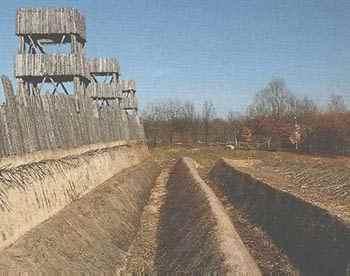
Construction of the Roman fortifications was still going on when Vercingetorix’s cavalry sallied out of the Gallic camp. Possibly numbering over 10,000, the Gauls were met in battle by Caesar’s cavalry. The earth rumbled from galloping horses, with the fighting sweeping over a three-mile stretch of plains between the hills. The Gallic horsemen gained the upper hand over Caesar’s auxiliary Gallic and Spanish cavalry but once again, Caesar had kept his Germans in reserve. The Germans turned the tide and harried the Gauls back against their outer wall and trench.
Behind the attacking Germans, the legions drew themselves up for battle. A general panic now erupted among the Gauls as the looked like the legions were preparing for an assault. Masses of Gauls tried to flee into the town but Vercingetorix had the gates shut. Below them at the camp ramparts, frantic Gauls jammed up the narrow gates or abandoned their mounts to scramble through the trench and up the wall. The Germans were right behind them, swords slashing and spears thrusting, riding down their panicked foes and capturing a number of horses into the bargain. Vercingetorix was forced to change his strategy, remaining on the defensive and sending out cavalry to raise a relief army among the nearby rebellious tribes.
As the siege dragged on, the perhaps 25,000 defending Gauls and the tens of thousands of non-combatants of Alesia were reduced to near starvation. Their spirits rose with the sighting of the arrival of the Gallic relief army under Commius, King of the Atrebates. Commius’ army numbered an estimated 120,000 men, three times larger than Caesar’s worn down legions and remaining auxiliaries. Caesar was now in a real bind, as Vercingetorix’s men stormed the inner line of Roman fortifications while Commius sent forth his cavalry, archers and light armed troops to assault the outward facing Roman defenses.
With his legionaries defending against Vercingetorix’ men, Caesar sent his cavalry to engage Commius’ troops. The besieged Gauls in Alesia shouted to encourage their own, more numerous cavalry. The hard fought battle lasted until the sun neared the horizon. It was then that the Germans massed all their squadrons for a charge. The German cavalry struck Commius’ Gallic horsemen like a thunderbolt. Commius’ cavalry fled the field, exposing his archers who were easily cut down.
With Commius’ cavalry pushed back, Vercingetorix withdrew his demoralized men back into Alesia. A second Gallic assault at night died in the fire of Roman siege engines. A third attack saw Caesar’s cavalry strike at Commius’ infantry from the rear, utterly beating them. With no help left, Vercingetorix surrendered. Aside from relatively minor engagements, it was the end of the Gallic wars.
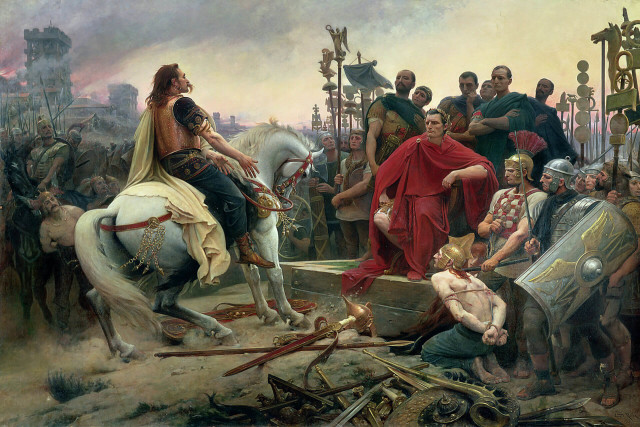
Caesar plunged the Roman Republic into civil war in 50 BC, when he marched his legions across the Rubicon and into Italy. For four years his Gallic and Germanic cavalry accompanied the legions through the civil war against the Pompeians and the interludes of the Egyptian and Pontic wars. After performing admirably in the Spanish campaign of 49, the auxiliary cavalry followed the legions to confront Pompey’s army in Greece.
In 48 BC, Caesar blocked Pompey from reaching his supply base at Dyrrachium. In turn, Caesar found his own supply route to Italy severed by Pompey’s naval dominance of the Adriatic. When Pompey tried to break through Caesar’s entrenchments, the Germans fought on foot beside the legions. Sallying forth over their own fortifications, the Germans slew several Pompeians before returning back to Caesar’s camp. Nevertheless, Pompey eventually managed to pierce the blockade. Forced to withdraw, Caesar’s army was demoralized and low on supplies.
Withdrawing into Thessaly, Caesar stormed the defiant town of Gomphi and gave it over to be ransacked by his half-starved soldiers. The whole army, especially the Germans, embarked on an orgy of gluttony and drinking. Pompey finally caught up with Caesar at Pharsalus. Caesar overthrew Pompey’s initially successful cavalry charge and inflicted a crushing defeat. Pompey fled to Egypt where the ministers of Ptolemy XII assassinated him.
Caesar became involved with Cleopatra and her dynastic struggles with her brother and co-regent Ptolemy. With the aid of Mithridates of Pergamum, Caesar cornered Ptolemy near the Nile. The Egyptian army sought protection on a hill flanked by a canal. The German cavalry swam the canal, striking the Egyptians in the flank and allowing the Romans to cross the canal unopposed and annihilate the Egyptians. After a lightning campaign against Pharnaces of Pontus, who had occupied Armenia and Cappadocia, Caesar returned to Italy.
In 46 BC Caesar continued the war against the followers of Pompey in North Africa . At fist Caesar was vastly outnumbered by the forces of Quintus Mettelus Scipio and King Juba but after but after being reinforced, brought the campaign to a victorious end at Thapsus. Caesar’s overeager veterans launched themselves into battle before the lines had been formed and without Caesar’s orders. Simultaneously his archers targeted the elephants which panicked and steam-rolled through their own lines, causing a general collapse among the opposing legions and the Numidians.
The civil war was brought to an end in 45 BC, when Caesar faced Gnaeus Pompeius’ legions at Munda. In addition to eight legions, Caesar possessed over 8000 cavalry, including his veteran Gauls and Germans and King Bogud of Maurentia, with his corps of Moorish horsemen. The 10th legion caved in the enemy’s left flank while the cavalry, with Bogud in the lead, vanquished the enemy horsemen and fell upon the enemy’s flank and rear.
Caesar returned to Rome and became dictator. He rewarded his veteran legionaries with a generous gift: gold coins equal to 27 years pay! Caesar disbanded his Praetorian bodyguard and his Spanish cohorts. Likely his Gallic and German cavalry disbanded as well, returning to their tribes with plunder and coin. Perhaps a few of their number were even granted the coveted Roman citizenship. No doubt, many stayed in some sort of military service for the Romans. There was certainly no lack of opportunity for a skilled sword for hire when, upon Caesar’s death in 44 BC, a new civil war erupted.
Caesar’s German cavalry had certainly proved their worth. In Gaul, they gave Caesar the advantage over hostile cavalry and returned the initiative to Caesar’s hands. Alongside the siege craft and tenacity of the legions, the German cavalry helped bring about Caesar’s victory at Alesia. In Greece, the German tribesmen proved that they could fight as well on foot as they could on horseback. In Egypt, they helped clinch the victory over Ptolemy. Few in number, Caesar treated his German cavalry as elite, often holding them in reserve until the situation became desperate. It was then, that this small but crack corps of warriors could decisively influence the course of a war.
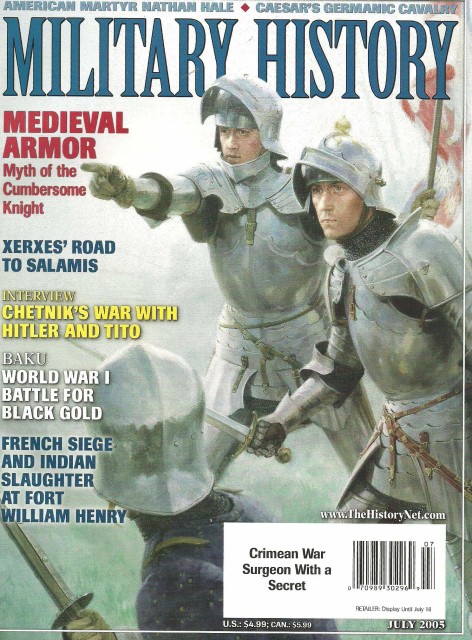
SOURCES
Appian, Appian’s Roman History. Vol. III. Trans. Horace White. London: William, Heinemann LTD, 1964, Bunson Matthew, A Dictionary of the Roman Empire. New York: Oxford University, Caesar. The Conquest of Gaul. London: Penguin Books. 1982, Caesar. The Civil Wars. Translated by W. A. McDevitte and W. S. Bohn. Ancient History, Sourcebook. Webpage, Cary M. and Scullard H.H. A History of Rome. London: MacMillan Education LTD. 1988, Delbrück, Hans. The Barbarian Invasions. trans. Walter J. Renfroe. Lincon: University of Nebraska Press.1990, Fuller J.F.C. Julius Caesar, Man, Soldier, and Tyrant. New Jersey : Da Capo Press. 1965, Goldsworthy, Adrian Keith. The Roman Army at War 100 BC-AD 200. Oxford: Oxford Claredon Press.1998, Macdowall Simon. Germanic Warrior 236-568 AD. London: Osprey. 1996, Macdowall Simon. The Late Roman Cavalryman 236-565 AD. Oxford: Osprey Publishing. 1999, McCall Jeremiah. The Cavalry of the Roman Republic. New York: Routledge. 2002, Plutarch. Plutarch Roman Lives. Trans. Robin Waterfield. Oxford: Oxford University Press. 1999, Suetonius. Trans. By Robert Graves. The Twelve Caesars. London: Penguin Books. 1989, Tacitus. The Agricola and Germania. trans. by H.Mattingly and S.A. Handford. Ontario: Penguin Books.1987, Todd Malcom. Everyday Life of the Barbarians. New York: Dorset Press.1988, Wilcox Peter and Trevino Rafael. Barbarians Against Rome. Oxford: Osprey Publishing, 2000).
